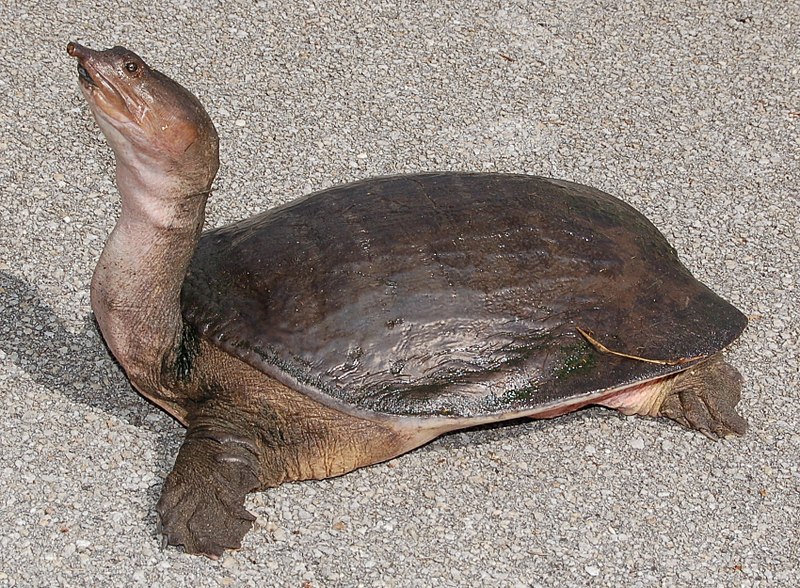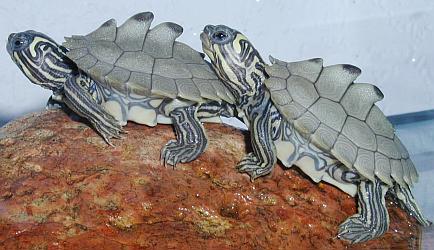Turtles and tortoises are the most popular of all reptilian pets – even “non-herpers” like them – and this is reflected by the many websites devoted to Chelonian-related matters. Following are some that I have found to be especially valuable. This list is by no means exhaustive…I’ll cover others in future articles.
The New York Turtle and Tortoise Society
I’ve worked with the dedicated folks at NYTTS for many years, and they have been kind enough to feature my articles on their  website. More important (infinitely more!) than my connection to NYTTS is their long standing relationship with legendary turtle biologist Peter Pritchard, who often speaks at the group’s day-long annual seminars. Rhom Whittaker, Mike Klemens, Roger Wood, Indraneil Das and numerous other notables have also participated in NYTTS sponsored programs.
website. More important (infinitely more!) than my connection to NYTTS is their long standing relationship with legendary turtle biologist Peter Pritchard, who often speaks at the group’s day-long annual seminars. Rhom Whittaker, Mike Klemens, Roger Wood, Indraneil Das and numerous other notables have also participated in NYTTS sponsored programs.
NYTTS provides quality husbandry information and also gets involved in the hands-on work upon which the survival of so many turtle species depends. They have long provided support to Southeast Asian students studying turtle biology here in the USA and to the fine work of the Wetlands Institute and have helped in large scale rescues of confiscated turtles.
NYTTS conservation and trade issues expert Alan Salzberg publishes Herp Digest, a wonderful resource and the only free electronic herp conservation and natural history newsletter.
Tortoise Trust
Tortoise Trust is one of the reptile-world’s most highly-respected sources of information on turtle and tortoise husbandry,  conservation and natural history. Noted author and herpetologist Andy Highfield directs the organization, which is utilized by professionals and hobbyists alike.
conservation and natural history. Noted author and herpetologist Andy Highfield directs the organization, which is utilized by professionals and hobbyists alike.
Tortoise Trust is unique among turtle interest groups in the range of activities it sponsors – courses, field trips, political action, research efforts – and in the numerous top notch publications it has generated (in addition to online material).
Turtles of the World
It’s difficult to believe that a resource of this caliber is available without charge on the inter net. An updated version of Ernst and Barbour’s classic book Turtles of the World, this publication provides detailed accounts and photos of the 288 species of turtle and tortoise described at the time of publication. A “must read” for serious turtle enthusiasts.
Turtle Homes
Operated by volunteers throughout the USA, the UK and Canada, and with connections to similar organizations in Asia and elsewhere, Turtle Homes members seek to place un-releasable turtles and tortoises with people or organizations that can properly tend to their husbandry and veterinary needs. They also post accurate care sheets, answer questions and direct site visitors to appropriate sources of information.
The California Turtle and Tortoise Club
The husbandry articles drawn from CTTC’s magazine, Tortuga Gazette, and posted on the group’s website, offer Chelonian enthusiasts some of the best information available on the inter net. The printed version of the Tortuga Gazette, published since 1965, is a well-written, invaluable resource to hobbyists and herpetologists alike.
The group is also actively involved in conservation efforts and supportive of turtle-friendly legislation, and offers site users a  number of ways to participate in such. In addition to dozens of informative articles, one may also find photographs and even recordings of tortoise vocalizations on this most useful web site.
number of ways to participate in such. In addition to dozens of informative articles, one may also find photographs and even recordings of tortoise vocalizations on this most useful web site.
 That Reptile Blog – Reptile, Amphibian and Exotic Pet Care and Information
That Reptile Blog – Reptile, Amphibian and Exotic Pet Care and Information



I’m over wintering a 38 lb. common snapping turtle. He looks as if he was hit by a propeller of a boat. His shell has been broken. He has been at the Vet’s for the last 2 mths. and now needs time for the shell to granulate in. He is not eating, he does have a feeding tube still inserted. He does not seem to be using his front legs, they are tight against his shell. He does not move at all and when in water sinks to the bottom only rising for air. Are these normal behaviors?
Hello, Frank Indiviglio here.
Thanks for your interest in our blog.
Usually snappers recover quite well, assuming an infection does not set in (sometimes this moves below the scutes, and is difficult to detect).
The coming of winter will complicate matters, however. Wild caught adults often will not feed during the winter, even if kept warm. They remain active but lose little weight during this time (metabolism adjusts). You may want to re-consider tube feeding – the digestive system may not function during the winter if controlled by an “internal clock” and undigested food will eventually cause severe problems. Unless the turtle is very emaciated (this depends on how the animal appears – fat deposits and such, and how large the shell is, not strictly on weight – I’ve had several in the 40+ pound range that were emaciated), you probably need not be overly concerned about feeding at this point; they are very effective at storing and using what food is available.
If you are cooling the turtle down for the winter (probably not a good idea, given that the shell must fill-in) then tube feeding should definitely be discontinued.
Some will feed over the winter, but stress is a factor, especially for an older wild-caught animal such as yours. Tube fed turtles will rarely feed on their own. Enclosure size is also important – I‘ve used 6 foot long cattle troughs for turtles over 20 pounds, but some do not adjust and need an outdoor enclosed pond. They need to hide, despite having a shell – for large turtles, a wooden “table”, with legs long enough to allow the animal to shelter below, works well. Those kept in open situations will rarely adjust to captivity, and the stress will weaken their immune systems considerably. Water depth is not as important as is a hide-away.
Lying on the bottom, largely immobile, is typical – in the wild they spend a great deal of time below the mud or beneath brush and other cover. It may also not be moving due to a normal winter slow-down. This may also affect the front leg immobility, especially if the turtle was moving about normally before – but radiographs would be the only way to check for unseen injuries.
Please feel free to write back with more details, and I’ll try to provide more info or will check with reptile vet contacts if need be.
Good luck, it’s a worthwhile but difficult undertaking, I applaud your dedication; please keep me posted.
Best regards, Frank Indiviglio.
Hello,
I have been trying to find info on using Decomposed Granite as a substrate for my desert, sulcata & pancake tortoises but no luck. I plan on using in my outdoor pens & indoor tables. Any thoughts would be appreciated. Thanks.
Hello, Frank Indiviglio here.
Thanks for your interest in our blog.
I don’t know of any zoos using decomposed granite; after looking it over I would not suggest it as a tortoise substrate. Gravel and crushed rock is easily swallowed, and may or may not pass through the digestive system – sharp edges would cause a real problem even if passed. I believe it may also be too course, especially for those tortoises that scrape out a depression for sleeping.
I’ve used regular grade “play” or construction sand for the species you’ve mentioned (I’m assuming desert is one of the Gopherus spp?); some soil can be mixed in for spurred tortoises, but not the other species.
For desert adapted species, you’ll do best with a substrate that does not support fungal growth; sand is fairly good in this regard. If you do see fungal or respiratory problems, consider using crushed oyster shell. It does not support fungus and fouled areas show up clearly. It looks a bit rough in texture, but I’ve had no problems at all using it in zoo collections of pancake, padloper and Egyptian tortoises.
Good luck and please keep me posted.
Best regards, Frank Indiviglio.
Through an active member of the CTTC, I have been able to re-home 2 boxies and a Russian tortoise, all well cared for and loved, but suddenly homeless. There were no signs of distress when evaluated a month later, one of the best days of my life,
Hello, Frank Indiviglio here.
Thanks for your interest in our blog. I’ve also found that Cal Turtle/Tortoise Society does a fine job; nice to hear of the happy outcome.
Good luck, enjoy and please keep me posted.
Best regards, Frank Indiviglio.